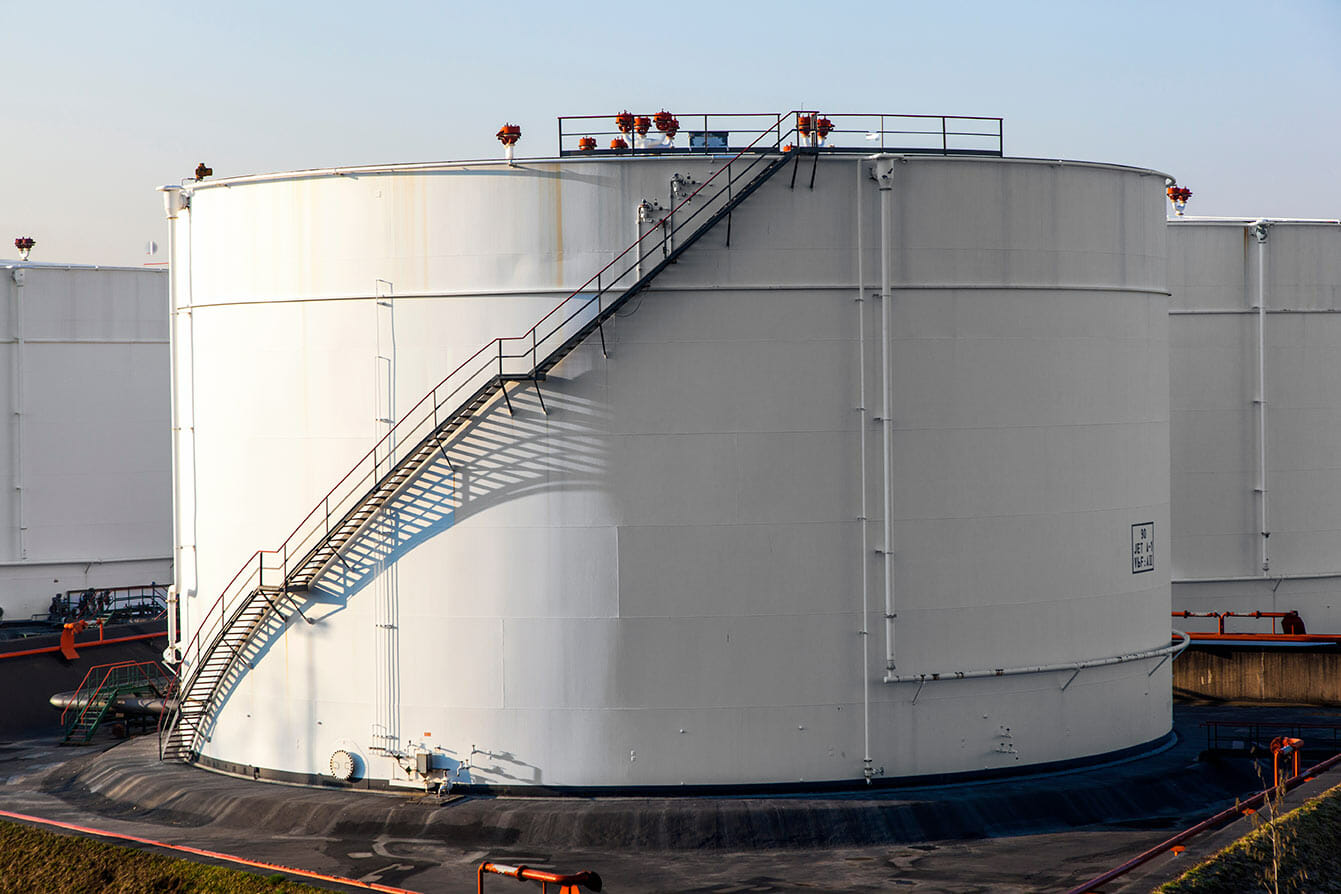June 21, 2023
- Pipeline
- Canada
- Chemicals
Diluent Recycling of a Large Tank Sweeping

Strategic pre-planning and tank sampling led to successfully sweeping a 27,000 m3 tank for a Northern Alberta Pipeline facility. More than 70% of the disposal costs were eliminated though effluent recycle with ZERO spills.
With the client’s facility operating for many years, the gradual build-up of unwanted solids resulted in off-spec diluent totaling 4,000 m3 which needed to be removed and disposed of.
By first sampling and fingerprinting the composition of the diluent, FQE developed a tailored cleaning program to agitate the heavy oil sludge to remove solids and explore the option of product recycle to reduce costs for the client.
Sampling and fingerprinting – chemical

Tank sampling was conducted at multiple locations at various depths to understand the diluent composition and examine the composition change throughout the tank. Extensive testing and analysis by our experienced personnel resulted in a tailored chemical treatment plan. This formed the basis for the cleaning strategy and the conceptualization of suspending the solids to blend with other tank diluents to create an on-spec product that could be sold instead of disposed of.
Pre-planning and logistics
Detailed plot and project execution plans were created in advance to determine when and where all equipment would be staged. This led to efficient equipment set up with minimal changes resulting in seamless execution. Contingency plans were made with waste hauling and disposal facilities so the removal of effluent could be taken off-site in a timely and predictable manner.
Non-entry tank cleaning/debulking (tank sweep)

FQE utilizes the latest in modern tank sweep technology as an effective technique to debulk and clean tanks. This is accomplished by installing multiple sweeps at multiple locations around the tank, which then circulates fluid in one unified direction to form a whirlpool inside the tank.
For this project, the solids were suspended in solution using the tank sweeps. This technique is inherently safer than classic tank entry methods as all the work was completed outside of the tank reducing hazardous atmosphere exposure to personnel.
- More than 70% of the 4,000 m3 of diluent was recycled, significantly reducing disposal costs
- Increased client revenues through hydrocarbon recovery
- Lessened the environmental impact

Waste disposal and emergency spill plan
Even with more than 70% of the overall waste recycled, approximately 1,000 m3 of waste still required disposal. FQE designed a schedule driven cost effective disposal plan by selecting the appropriate disposal facilities within near geographic proximity. The waste program also featured contingency disposal facilities should large throughput of waste be needed in short duration to maintain schedule.
Fully understanding the inherent risks associated with significant volume fluid handling, comprehensive spill plans were created to eliminate spillage on-site, and protect workers in the event of an emergency. These plans incorporated worker communication protocols and multiple process controls.
Zero spills were created during this project.
Highlights
Recycle program reduced disposal cost up to 70% and generated otherwise lost revenue
Successful tank sweep suspended solids in diluent to remove 4,000 m3 of waste with zero spills
Detailed project execution plan resulted in efficient set-up, and on-time project deliverables